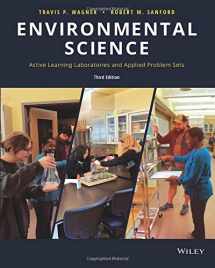
Environmental Science: Active Learning Laboratories and Applied Problem Sets, Third Edition
Book details
Summary
Description
Historically viewed as a sub-discipline of biology or ecology, environmental science has quickly grown into its own interdisciplinary field; grounded in natural sciences with branches in technology and the social science, todays environmental science seeks to understand the human impacts on the Earth and develop solutions that incorporate economic, ethical, planning, and policy thinking. This lab manual incorporates the fields broad variety of perspectives and disciplines to provide a comprehensive introduction to the everyday practice of environmental science. Hands-on laboratory activities incorporate practical techniques, analysis, and written communication in order to mimic the real-world workflow of an environmental scientist. This updated edition includes a renewed focus on problem solving, and offers more balanced coverage of the fields diverse topics of interest including air pollution, urban ecology, solid waste, energy consumption, soil identification, water quality assessment, and more, with a clear emphasis on the scientific method. While labs focus on the individual, readers are encouraged to extrapolate to assess effects on their campus, community, state, country, and the world.


We would LOVE it if you could help us and other readers by reviewing the book
Book review



